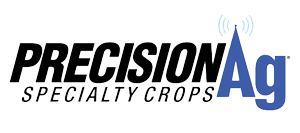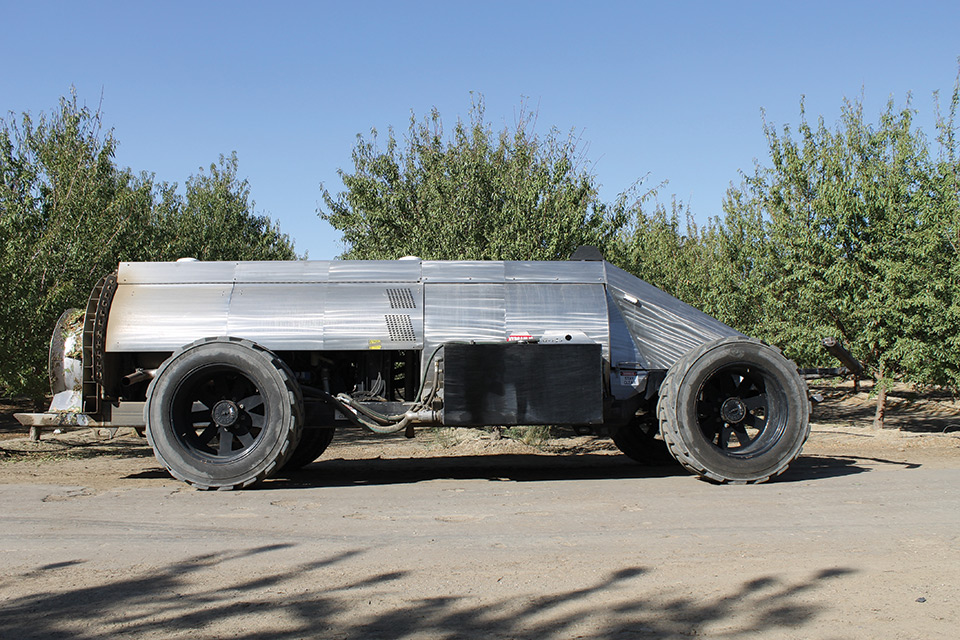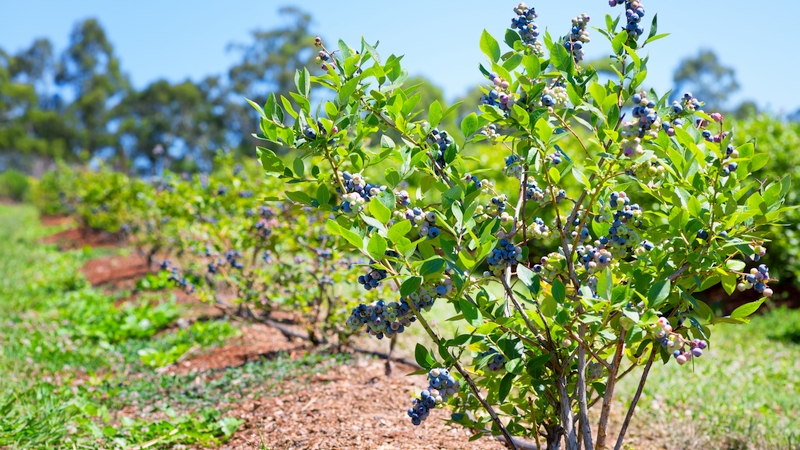Next Generation of Orchard Sprayers is Autonomous

GUSS stands for Global Unmanned Spray System and according to its creator, CFS, it’s the world’s first autonomous orchard sprayer. GUSS’s low front profile was designed to drive easily in the orchard, with branches flowing over top of the sprayer. (Photo: David Eddy)
It’s no secret that automation is the future of agriculture. For grower John Coleman of Coleman Farming, LLC, in Fresno, CA, that realization came quite early.
Coleman distinctly remembers a scene from the 1984 movie “Runaway,” where robots are removing larvae from a large planting of corn.
“I remember seeing that and thinking ‘OK, this is going to happen,’” Coleman says of the movie. “I’m almost surprised it took this long. I just remember thinking ‘Oh, we’re definitely thinking we’re going to have robots on the farm.’”
And while robots aren’t plucking larvae off his cornfield, automation has made it to his family’s pistachio orchards in the form of GUSS. So when Coleman first heard about GUSS, the scene in “Runaway” was precisely what he thought about.
GUSS stands for Global Unmanned Spray System. It’s the world’s first autonomous orchard sprayer and was developed by Crinklaw Farm Services (CFS), a company that provides contract farm services for operations such as Coleman Farming.
Driverless Dream to Reality
Owner Dave Crinklaw had his eye on “driverless” sprayers for at least a decade or so. But, at the time when Crinklaw first thought about driverless sprayers, the technology wasn’t up to speed for implementation. Fortunately, precision agriculture has changed a lot in the last five years, which is what encouraged Crinklaw to begin developing GUSS.
And while the technology has improved, the true push to move the company toward developing this type of equipment was labor. Gary Thompson, Marketing Director for GUSS, is quick to add that it’s not just the lack of employees, it’s the changes to labor regulations, wages, etc.
“There’s a lot that finally pushed us to say ‘we’ve got to start doing something different,’” he says. “We decided to take the plunge into developing this unmanned sprayer.”
It was about four years ago that CFS took the “plunge.” Buoyed by the company’s experience with building spray equipment CFS started developing the autonomous vehicle from the ground up.
“Everyone told us it couldn’t be done in an orchard because once you get under the tree canopy, you lose GPS signal,” Thompson says.
 The challenge for the design team was how to get the autonomous sprayer to drive when GPS is out of the equation. In addition to GPS, GUSS uses a laser, gyroscope, and wheel and steering sensors that feed information to computer software, which makes real-time driving decisions. Those decisions are fed back to the steering and wheel motors to then move GUSS forward.
The challenge for the design team was how to get the autonomous sprayer to drive when GPS is out of the equation. In addition to GPS, GUSS uses a laser, gyroscope, and wheel and steering sensors that feed information to computer software, which makes real-time driving decisions. Those decisions are fed back to the steering and wheel motors to then move GUSS forward.
“It took years of testing and fine-tuning, but we got it right,” Thompson says. “It does a precise job of spraying, and that’s a major strongpoint of the machine.”
Safety First
GUSS’s low-profile was developed with the intention of tree branches flowing over top of the sprayer, as not to disrupt or dislodge fruit from the tree limbs. And, the sprayer can work in almond, walnut, pistachio, tree fruit, and citrus orchards. GUSS also uses a 16-blade Breeza fan for air movement.
The machine comes equipped with several safety features and sensors. The sprayers have four-wheel drive and four-wheel steering, with a 17-foot turning radius. GUSS has a laser that will stop the machine when it senses a person or an object about four feet in front of the vehicle. Also equipped with an impact-sensing bumper, the vehicle will shut down when pushed.
In addition, GUSS has a camera that live streams video of the sprayer in action, and there is a remote operator who can monitor up to 10 sprayers at a time. If this operator sees anything of concern through the live stream, the sprayer can be stopped or told to ignore an obstacle, whatever might be the case.
“We knew that had to be one of the goals for the machine to not have incidents,” Thompson says. “The front laser does two things: sees the trees as it’s driving down the orchard row to keep the vehicle centered and also looks for obstacles – like a tree that fell down. If it sees an obstacle, the machine will stop.”
GUSS’s speed is precisely set into the software and remains constant across the entire orchard.

Operator Danny Mora runs GUSS sprayers from inside the mobile command central. Operators use software to map a route before anything is sprayed with the device and control up to 10 devices at a time. (Photo: David Eddy)
Virtual Fence
Before GUSS starts spraying any farm, a satellite image of the farm is called up and a grid is built to indicate the driving rows of the field. Operators can also add row spacing and can flag any obstacles that might be in the way. Thompson says these could be pumps, power pulls, or sheds. Routes can be built around the obstacle, or the machine can stop when it gets within 15 feet of the obstacle, so the operator can manually drive the sprayer around it.
Spray parameters are also set – gallons per acre, spray rates pressure, etc. The route is calibrated so GUSS will stop on an avenue before it runs out of material.
“That’s how we’ve always done our spraying,” Thompson says. “If you run out in the middle of a field, you’re never going to find your exact spot again.” From there, every time GUSS sprays an orchard, a virtual fence is added around the field in the mapping software. If GUSS crosses over the “virtual fence” for any reason, it automatically shuts down. All the data of each spray is recorded with rates applied and date and time of spray. This data is saved and can be downloaded to a thumb drive and accessed by the grower.
Testing
John Coleman says his family’s CFS rep wanted to test GUSS in a particularly challenging pistachio orchard in Eastern Madera County. Coleman says it’s not located near any cell phone towers, has some uneven terrain, and has a creek running through two sides of the property.
“Each tree row is a different length,” Coleman says, noting the rep “wanted to make it hard on the equipment.”
Early in GUSS’s development, the sprayer initially ran in Coleman’s orchard using just water. The test, he says, was more about the software and the sprayer itself more so than it was about coverage. CFS came back a second year to test the sprayers and there were no issues. Coleman says they started using GUSS for navel orangeworm sprays, and, so far, the experience with the GUSS operators has been great.
“The guys are very patient. They had a control van that they were operating out of and they said, ‘go on in, check it out,’” he says. “They showed me everything and explained everything to me that was going on so there was no mystery.”

This sprayer is designed to work in almond, walnut, pistachio, tree fruit, and citrus orchards. (Photo: David Eddy)
GUSS’s Future
In October, CFS marked 20,000 acres sprayed by GUSS since its 2018 World Ag Expo debut. Thompson says since that debut, there has been a lot of interest in GUSS. A new manufacturing facility is expected to be completed in March. Pre-orders will be taken at the 2019 World Ag Expo.
“The machines are more precise than what we’re getting out of conventional spray equipment,” he says. “You put them out in the field and they just go.”
And for growers who are interested, Coleman says “I think you’re going to be really happy with the application.”
Coleman says the videos on YouTube, GUSS’s website at GUSSag.com, or any of GUSS’s social media accounts are a must. He says you’ve got to see GUSS in action.
The precision is amazing, Coleman says of GUSS. “[It is] the precision, tracking exactly what’s going out, controlling the speed, and covering more acreage. It’s the future”










